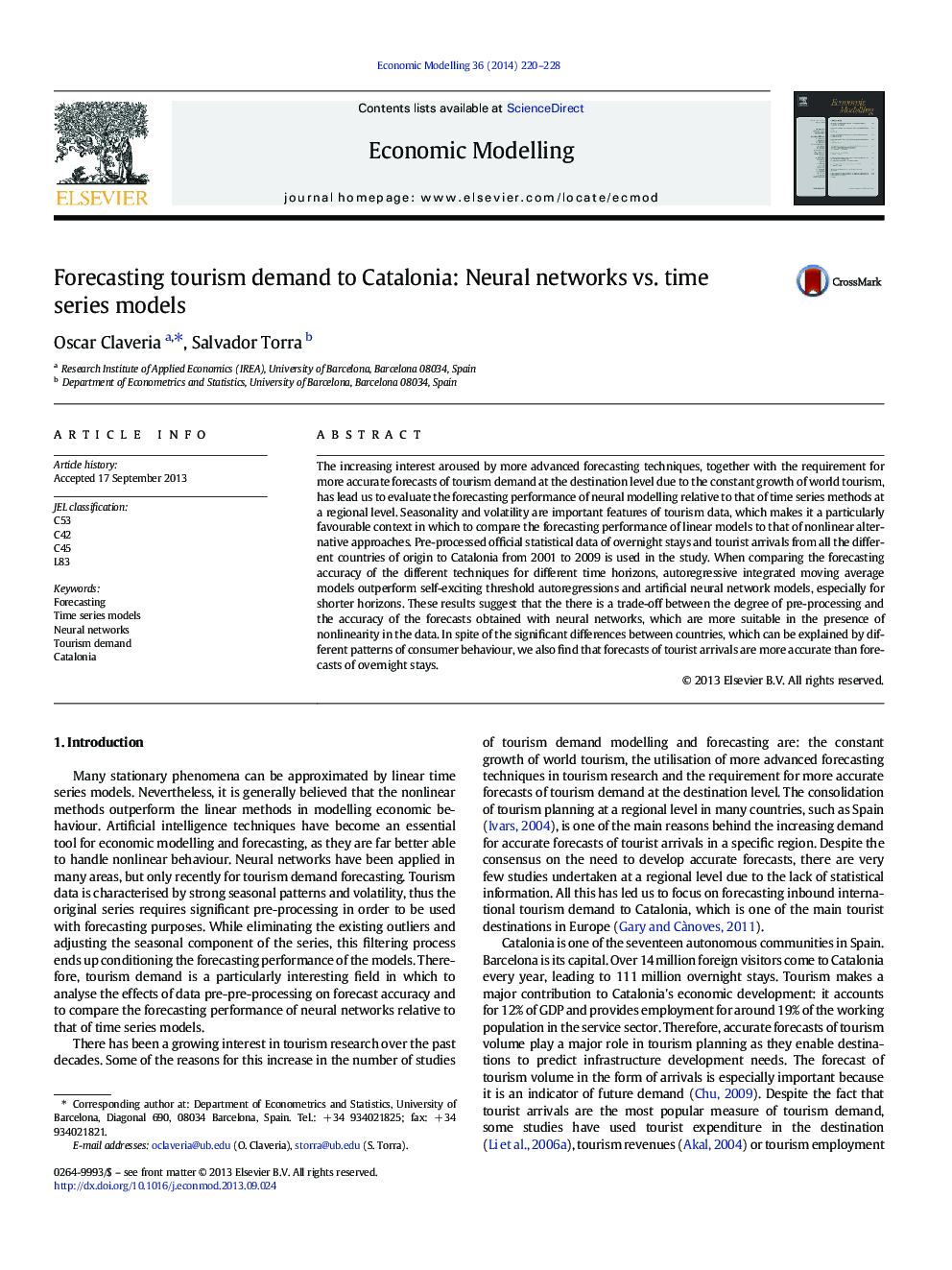| Article ID | Journal | Published Year | Pages | File Type |
|---|---|---|---|---|
| 5054291 | Economic Modelling | 2014 | 9 Pages |
Abstract
The increasing interest aroused by more advanced forecasting techniques, together with the requirement for more accurate forecasts of tourism demand at the destination level due to the constant growth of world tourism, has lead us to evaluate the forecasting performance of neural modelling relative to that of time series methods at a regional level. Seasonality and volatility are important features of tourism data, which makes it a particularly favourable context in which to compare the forecasting performance of linear models to that of nonlinear alternative approaches. Pre-processed official statistical data of overnight stays and tourist arrivals from all the different countries of origin to Catalonia from 2001 to 2009 is used in the study. When comparing the forecasting accuracy of the different techniques for different time horizons, autoregressive integrated moving average models outperform self-exciting threshold autoregressions and artificial neural network models, especially for shorter horizons. These results suggest that the there is a trade-off between the degree of pre-processing and the accuracy of the forecasts obtained with neural networks, which are more suitable in the presence of nonlinearity in the data. In spite of the significant differences between countries, which can be explained by different patterns of consumer behaviour, we also find that forecasts of tourist arrivals are more accurate than forecasts of overnight stays.
Related Topics
Social Sciences and Humanities
Economics, Econometrics and Finance
Economics and Econometrics
Authors
Oscar Claveria, Salvador Torra,
